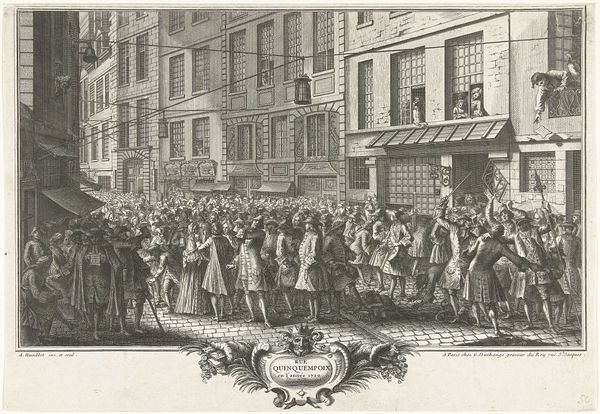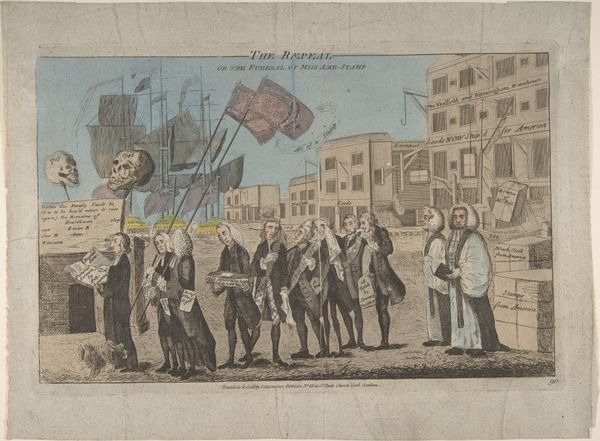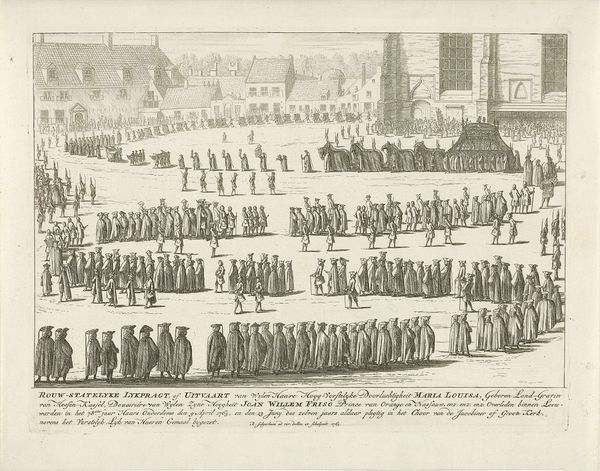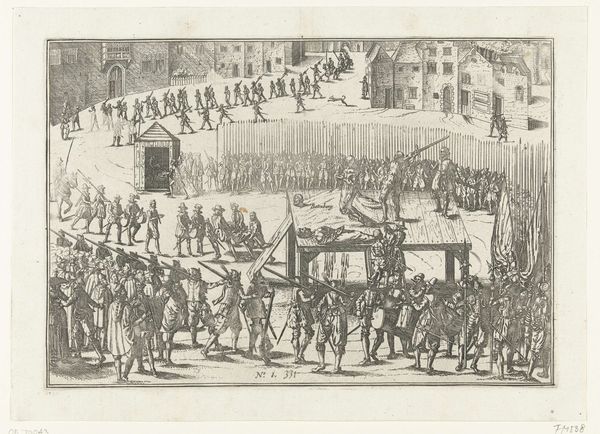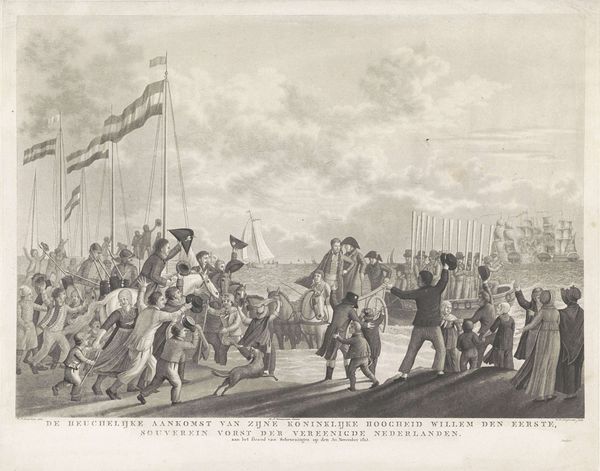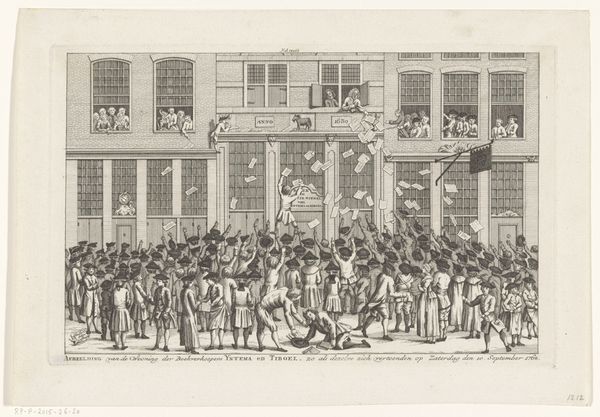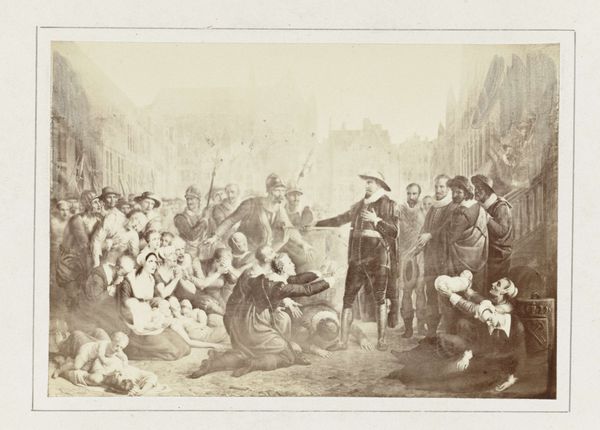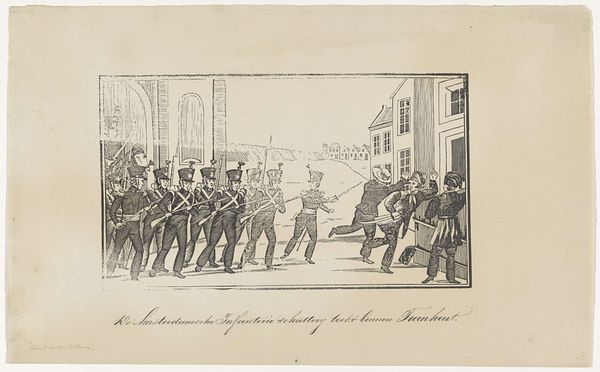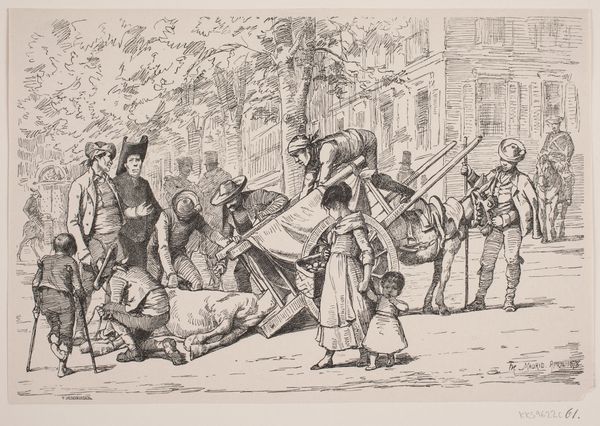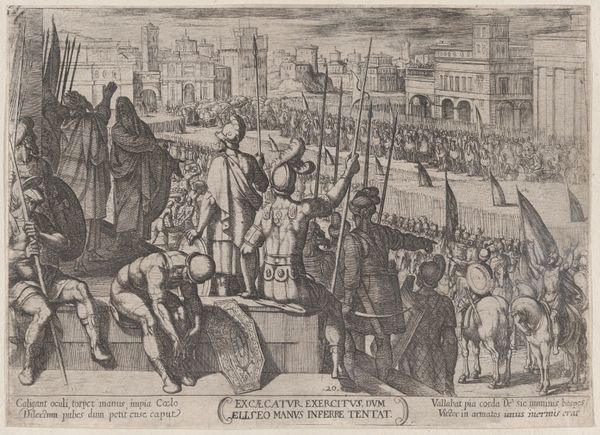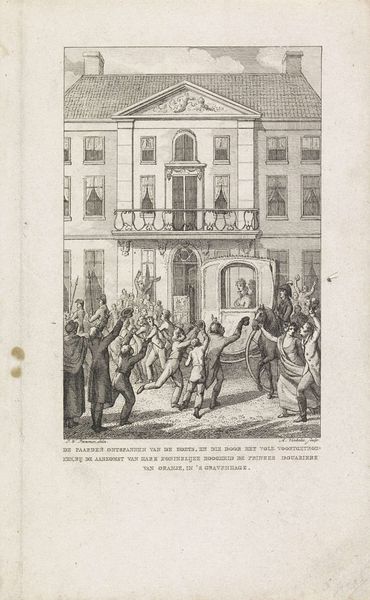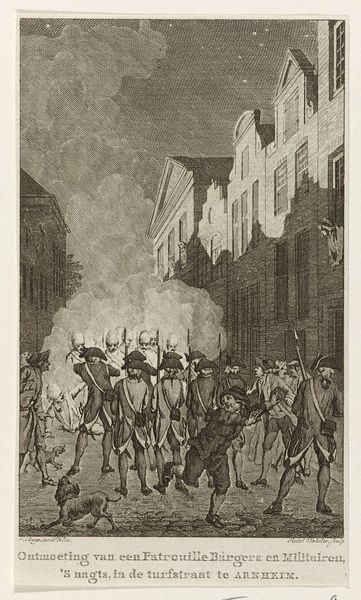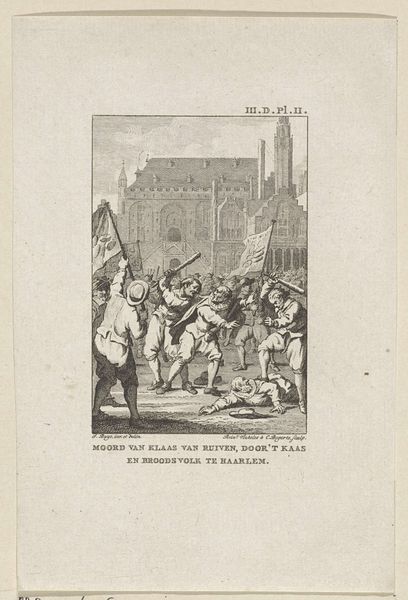
Overbrengen van de zegetekenen op het stadhuis van Amsterdam, 1806 1806 - 1816
0:00
0:00
print, engraving
#
neoclacissism
#
narrative-art
# print
#
war
#
old engraving style
#
cityscape
#
history-painting
#
engraving
Dimensions: height 112 mm, width 171 mm
Copyright: Rijks Museum: Open Domain
Editor: So, this is "Overbrengen van de zegetekenen op het stadhuis van Amsterdam, 1806" by Cornelis Bogerts, created sometime between 1806 and 1816. It's an engraving of what looks like a military parade in Amsterdam. It’s a bit hard to decipher; the line work is very fine. What stands out to you? Curator: What grabs me is the materiality of this print – the very labour that went into producing it, the plates etched and re-etched. Consider the purpose of this object: not simply artistic expression but also mass communication, part of a complex network of disseminating political power. What does it mean to translate a triumphal procession into this reproducible format? Editor: That's interesting. I hadn’t really considered the "mass communication" aspect. Does the medium itself affect the message? Curator: Absolutely! Engraving, unlike painting, allowed for the widespread distribution of this image. It transformed a fleeting moment of civic celebration into a commodity, easily consumed and displayed. This commodification served to further legitimize the new political order. How does this consideration of material impact your understanding of Neoclassicism? Editor: I guess I always saw Neoclassicism as this high-art movement obsessed with the antique and ideal forms. But, framed like this, I start seeing its deep involvement with actual political happenings. The "making of" history is present in the image, isn't it? Curator: Exactly! This print forces us to see Neoclassicism not as a detached aesthetic pursuit but as an active participant in the social and political landscape of its time. Now you are getting somewhere! Editor: Thanks! Considering its production and consumption, the print's role in shaping public opinion during a time of political change becomes clearer to me. Curator: Precisely. Looking beyond the surface image to examine the labor and means of production allows a new layer of understanding of political history and narrative art.
Comments
No comments
Be the first to comment and join the conversation on the ultimate creative platform.
